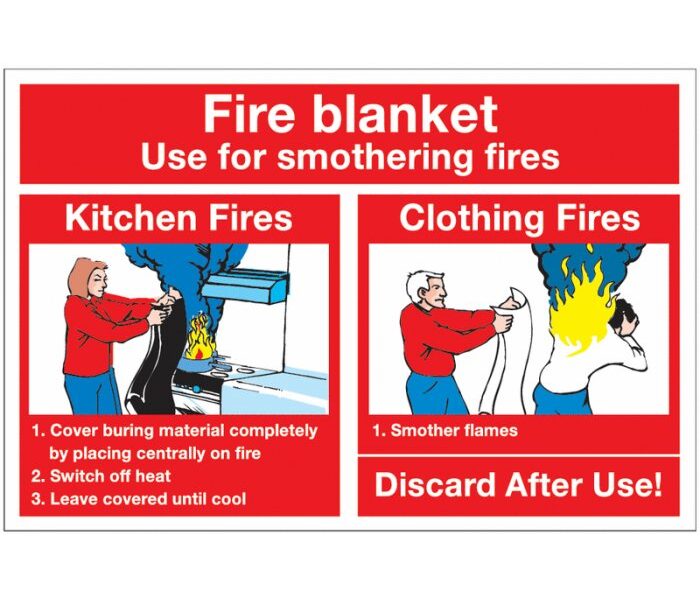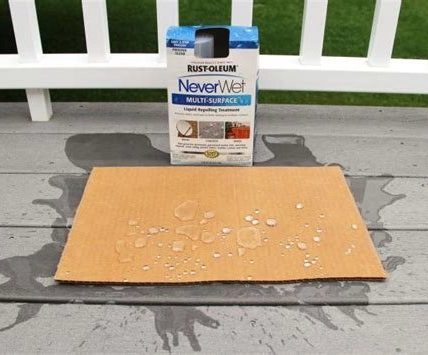When a fire breaks out, quick action can make all the difference. Smothering a fire with a fire blanket is appropriate in situations where the flames are small and manageable, such as cooking fires or when clothing catches fire.
Understanding when would it be appropriate to smother a fire with a fire blanket can prevent minor incidents from escalating into disasters.
It’s crucial to act swiftly, ensuring you cover the flames completely to cut off their oxygen supply. With the right knowledge, you can handle small fires safely and effectively.
When Would It Be Appropriate to Smother a Fire with a Fire Blanket?
Fire safety is an essential part of both home and workplace environments. Understanding when and how to use a fire blanket can play a critical role in managing small fires effectively and safely. In this article, we will explore the various scenarios where smothering a fire with a fire blanket is appropriate, discuss the types of fires that can be controlled with this method, and share best practices for using a fire blanket safely.
What is a Fire Blanket?
A fire blanket is a safety device used to extinguish small fires. It is made of flame-resistant materials, typically fiberglass or wool, which can withstand high temperatures. Fire blankets are designed to smother flames by cutting off the fire’s oxygen supply, helping to prevent the fire from spreading or growing larger.
Types of Fires Suitable for Fire Blankets
Not all fires are appropriate for smothering with a fire blanket. Understanding which fires can be managed this way is crucial. Here are some common types of fires that can effectively be extinguished with a fire blanket:
Kitchen Fires
Many kitchen fires occur due to cooking accidents. Common examples include:
- Grease fires from cooking oil or fats.
- Fires ignited by food left unattended on the stove.
- Flames from ovens or toasters.
In these situations, a fire blanket is appropriate because it can quickly smother the flames without spreading the fire further.
Clothing Fires
If someone’s clothing catches fire, using a fire blanket can be an effective way to extinguish the flames. Here’s how this works:
- Wrap the person in the fire blanket, covering them fully.
- Lay them on the ground to prevent any movement, which could fan the flames.
This method helps to smother the fire and protects the individual from burns.
Small Waste or Paper Fires
Fires that occur in trash cans or from burning paper can also be managed with a fire blanket. Here’s what to remember:
- Ensure that the fire is small and manageable.
- Do not attempt this on large fires or those that have spread beyond a waste container.
Smother the fire by carefully placing the blanket over the flames to extinguish them.
When Not to Use a Fire Blanket
While fire blankets are useful, they are not suitable for every situation. Here are some scenarios where using a fire blanket is inappropriate:
Large Fires
If the fire is larger than a wastebasket or has spread beyond a small area, it is vital to evacuate the premises and call emergency services. Attempting to use a fire blanket on a large fire can endanger you and others.
Electrical Fires
Using a fire blanket on electrical fires can be dangerous. If you suspect the fire is related to electrical equipment, do not attempt to smother it with a blanket. Instead, switch off the circuit at the main power supply if safe to do so and call for help.
Chemical Fires
Fires involving flammable liquids or chemicals require specialized knowledge and equipment to handle. Using a fire blanket in these situations can exacerbate the problem and should be avoided.
Steps to Use a Fire Blanket Correctly
Using a fire blanket effectively requires knowledge and preparedness. Follow these steps to ensure safer usage:
1. Assess the Situation
Before you act, take a moment to evaluate the fire:
- Determine if the fire is small and manageable.
- Check if anyone is in immediate danger and needs assistance.
- Ensure that you have a clear escape route in case the fire worsens.
2. Grab the Fire Blanket
Make sure you know where your fire blanket is stored. Always keep it in an easily accessible location, such as:
- Near the kitchen.
- In designated firefighting zones at work.
- Close to exits during outdoor activities.
3. Approach with Caution
As you approach the fire, shield yourself with your arms if possible. Remember to stay low to avoid smoke inhalation.
4. Use the Blanket
When ready to use the blanket, do the following:
- Hold the blanket by the tabs or corners, keeping it away from your body.
- Gently place the blanket over the flames to cut off the oxygen supply.
- If using on a person, ensure it wraps around them completely.
5. Monitor the Fire
After covering the flames, keep an eye on the situation. If the fire does not go out immediately, do not attempt to lift the blanket. Instead, evacuate and call emergency services.
Maintenance and Inspection of Fire Blankets
To ensure your fire blanket is effective when you need it, routine maintenance and inspection are essential. Here’s what to do:
Check Regularly
Make it a habit to inspect your fire blanket every six months. Look for:
- Tears or damage to the material.
- Presence of foreign objects (such as dust or debris).
Storage Conditions
Store your fire blanket in a cool, dry place. Keep it away from direct sunlight and damp environments, which can degrade its materials.
Benefits of Using a Fire Blanket
Fire blankets offer several advantages in fire safety. Here are some key benefits:
Immediate Action
Fire blankets allow for quick action in emergencies without the need for water or other firefighting equipment. This can make a significant difference in controlling small fires before they escalate.
Portability
Fire blankets are lightweight and easy to store, making them accessible in various environments, including homes, kitchens, and workplaces.
Non-toxic and Safe
Unlike some fire extinguishers that contain chemicals, fire blankets are often made from non-toxic materials, making them safer for use around food and people.
Training for Fire Blanket Use
Training on how to use a fire blanket can enhance safety. Here are ways to ensure readiness:
Conduct Drills
Regular fire drills can familiarize everyone with the location and use of fire blankets. Practice smothering small fires in controlled environments to build confidence.
Education Programs
Consider attending fire safety workshops. Many local fire departments offer educational programs about fire prevention and appropriate response techniques.
Knowing when and how to smother a fire with a fire blanket is a vital part of fire safety preparedness. By understanding the types of fires that are suitable for this method, following proper usage protocols, and maintaining your fire blanket, you can effectively enhance safety in your home and workplace. Always remember that while fire blankets can be incredibly effective for small, manageable fires, not every fire scenario allows for their safe utilization. Your safety and the safety of others is the top priority, so be sure to act quickly and smartly.
When would it be appropriate to smother a fire with a fire blanket
Frequently Asked Questions
“`html
What types of fires can a fire blanket effectively extinguish?
A fire blanket is especially effective for small fires involving flammable liquids, grease, or cooking materials. You should use it for fires that start in confined spaces, like kitchen fires, where using water or other extinguishers may not be safe. It works by smothering the fire and cutting off its oxygen supply, making it an excellent choice for these situations.
How do I know if it’s safe to use a fire blanket?
Ensure the fire is small and manageable before using a fire blanket. If the flames are larger than you can handle or if there’s smoke filling the room, evacuate immediately and call emergency services. Additionally, make sure you have a clear escape route when approaching the fire with the blanket.
Can I use a fire blanket on a person whose clothing is on fire?
Yes, you can use a fire blanket to smother flames on a person. Wrap the blanket around the individual to extinguish the flames while ensuring you cover their entire body. However, prioritize calling emergency services and providing support after you put out the flames.
Is it advisable to use a fire blanket for electrical fires?
Do not use a fire blanket on electrical fires unless you are certain the power source is turned off. Fire blankets work best on small fires. For larger electrical fires, it’s safer to use a fire extinguisher rated for electrical fires or to evacuate the area and contact emergency services.
What are the limitations of using a fire blanket?
Fire blankets are not suitable for large fires or fires fueled by chemicals and gases. They are designed for small, contained fires only. If a fire spreads beyond your control or if it’s in a hazardous environment, evacuating and contacting professionals is the safest approach.
“`
Final Thoughts
Using a fire blanket can be an effective way to extinguish small, contained fires. It’s appropriate to smother a fire with a fire blanket when flames emerge from flammable liquids, cooking mishaps, or in situations with small electrical fires, assuming you can safely reach the blanket.
Always ensure that the fire is manageable and that you can approach it without putting yourself at risk. If the fire spreads or becomes too dangerous, evacuate immediately and call emergency services. Remember, when would it be appropriate to smother a fire with a fire blanket? Always prioritize safety and know when to seek help.





